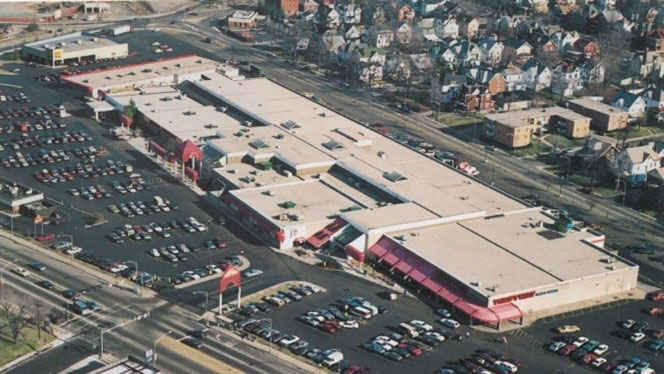
Environmental remediation to allow re-development of a commercial property in Ohio
The proposed property in Norwood (Cincinnati metropolis) was developed as a strip mall and grocery store, with a prior use history that included industrial use and petroleum storage dating back to the late 1800s. The site plans included the demolition of the existing structures and the redevelopment of the site into a new grocery store and shopping mall, featuring commercial outlot buildings and restaurants. This multi-million-dollar investment aimed to maintain access to groceries and other services that the local population would not have had easy access to otherwise. The city bus service provided transportation to the site and the surrounding city.
Superior Environmental (now AKT Peerless) performed supplemental due diligence for the client by completing a limited-scope Phase II Environmental Site Assessment (ESA) to address data gaps from prior investigations. This was followed by an Ohio Voluntary Action Program (VAP) Phase I and Phase II Property Assessment (VAP Phase II). Asbestos-containing material (ACM) inspections of the buildings on the subject property were also conducted. It was determined that ACM was present in multiple site buildings and was removed and disposed of prior to the building demolitions.
Concurrent with the demolition, AKT Peerless’s VAP Phase II effort included an extensive site-wide subsurface investigation of soil, groundwater, and vapor intrusion into indoor air evaluation in relation to the proposed redevelopment. The Phase II results indicated two identified areas (IA) and one exposure unit with constituents of concern that could present complete exposure pathways to human receptors. One IA required lead to be stabilized in the soil to allow for its transportation and disposal at a landfill, and one IA required chemical oxidation to break down chlorinated volatile organic compounds in soil and groundwater. The exposure unit required the installation of an impermeable membrane with a vapor extraction system beneath a building during its construction. These remedies allowed construction and redevelopment to move forward concurrently with the remedial activities.
Upon completion of the remediation and a follow-up property risk assessment, AKT Peerless submitted a draft report to the Ohio Environmental Protection Agency (OEPA), which resulted in the agency’s approval of the No Further Action (NFA) letter as a solution that would be protective of human health and the environment. AKT Peerless also recommended that an environmental covenant be placed on the subject property to restrict the use of groundwater as drinking water.
No further investigation was approved by OEPA for the site, and the VAP Phase II was filed with the County Recorder’s office.